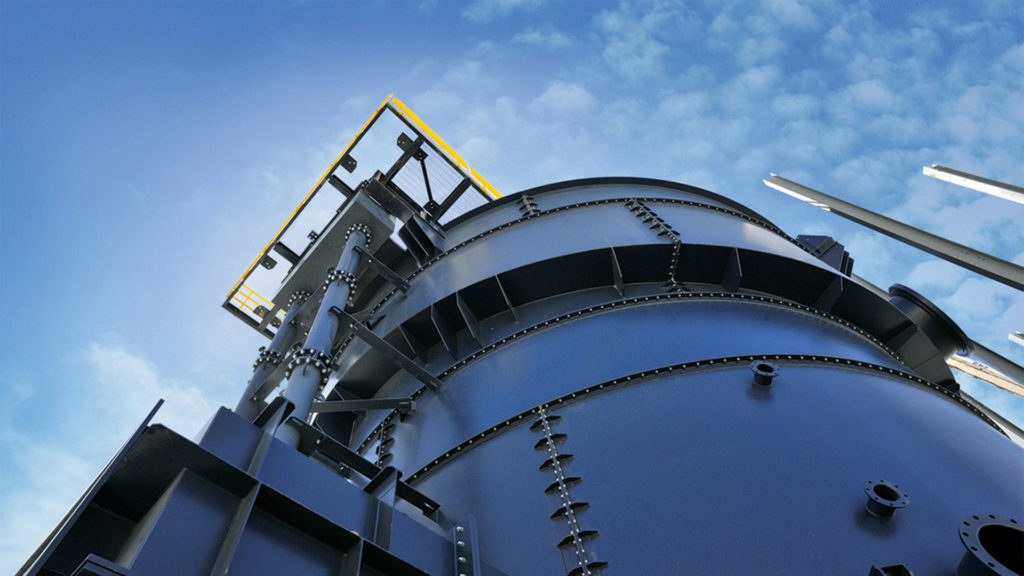The flotation process can be divided into two stages: formation of the bubble-particle aggregates in the slurry and recovery of these aggregates in the froth. Historically, most attention – both from the theoretical and practical point of view – has been given to the first part of this process. But due to a newly developed instrumentation package, optimising froth recovery rates is now set to deliver real dividends says FLSmidth.
“It is probably no exaggeration to say that the potential from augmenting froth recovery rates – in terms of what more efficient control of the level, residence time in froth and pulling rates could deliver – was only recognised a few years ago by the industry,” commented Dr Dariusz Lelinski, Global Product Manager for Flotation, FLSmidth. “This is because it was assumed that there are no losses during transport from slurry to the launder. It was only a few years ago it was measured that the loses are typically 50% and can reach as high as 90% for coarse particles. What it means is that 50% (averaging over all sizes) of particles must be captured again after detachment in froth phase.”
“Our goal was to increase the probability of recovery of particles in the froth phase, especially coarse ones. There is no simple way to achieve it, so we came up with combination of instruments and devices flexible enough to achieve our goal in majority of flotation applications,” explains Lelinski.
Equally applicable to sites operating with either self-aerating WEMCO® flotation cells or externally aerated nextSTEP™ machine, the newly developed froth-recovery instrumentation package could be a game-changer in flotation recovery. The solution comes from the recognition that the combination of exact slurry level measurement, accurate control of flow using redesigned dart valves and new Festo actuators (designed specifically for FLSmidth) allows for superior control of the froth phase. This in turn results in quicker reactions to flow and slurry density changes, which will dramatically improve performance of flotation machines.
The conventional way to influence the froth recovery is a combination of changes to froth height (improved by new actuators and dart valves), froth crowding (in the middle of the cell without the possibility of adjustment after installation and not influencing the most active part of the froth surface), and number of radial launders.
“All these changes are still possible while using FLSmidth froth recovery package,” says Lelinski. “The most difficult part is froth recovery at the end of the row; there is not enough of hydrophobic particles to form stable, deep froth and a large percentage of these particles is left unrecovered. Our package allows not only to recover these particles, but to control required balance between recovery and grade in this part of flotation circuit. So overall, you get better results, but it also gives you another degree of process control, not only during difficulties of froth formation, but during normal operation allowing to more flexibility in selecting grade-recovery relationship.”
Central to the froth recovery package are Adjustable Radial Froth Crowders (ARFC) that were recently developed in-house by FLSmidth. The ARFCs are mechanical devices enabling increase of either recovery or grade regardless of amount of froth formed at the top of the machine. They allow for much higher pulling rates (recovery) or much deeper froth (grade) which is currently hindered by top of the flotation machine geometry.
“As well as the ARFC, an advanced froth camera is provided in cooperation with Stone Three, a market leader in vision equipment. Froth cameras are a flotation instrument of central importance as they allow precise monitoring of the froth phase. By developing these with the high-performing company such as Stone Three, we knew we would be able to deliver the best possible product to our customers,” adds Lelinski. “These cameras are the second key component of the package.” Alongside these elements are improved and redesigned actuators, developed in cooperation with Festo, and a new and improved level sensor, which monitors both the slurry and froth positions with the MultiSense probe, provided in cooperation with HyControl. The final piece of the package are redesigned dart valves (typically in a hinged dart valve configuration), which are the result of an in-house, value engineering project.
“We are excited to deliver this complete package to our customers. All the elements working together in combination with radial froth crowders, means this package will deliver better recovery at the same grade or increased grade at the same recovery, making this package better that the sum of all its parts.”











